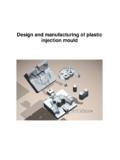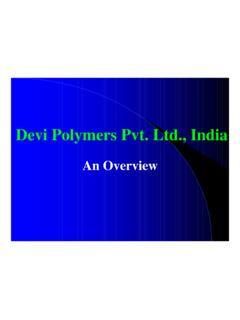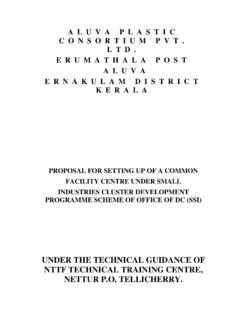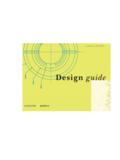Transcription of Safety at injection moulding machines PPS4(rev1)
1 1 of 5 pagesHealth and Safety ExecutiveHealth and Safety ExecutiveHSE information sheetPlastics Processing Sheet No 4 (Revision 1) Safety at injection moulding machinesIntroductionThis information sheet is one of a series produced by HSE s manufacturing sector and gives practical advice for owners and users of injection moulding machines . It gives information on commonly accepted and practicable safeguards for significant hazards on injection moulding machines supplied before the publication of BS EN 201:1997.
2 This standard was replaced by BS EN 201:20091 and represents current state of the art for these machines . This guidance can also be used as a check for machines manufactured after 1997 to make sure that they meet the minimum levels of protection main UK legal requirements covering the safe use of injection moulding machines are the Provision and Use of Work Equipment Regulations 1995, all new machinery has been subject to the European Machinery Directive, which requires machines to be safe by design and construction.
3 When first placed on the market or first put into service, machinery must meet all relevant Essential Health and Safety Requirements (EHSRs) in the Directive. The machine should be designed to the state of the art , and be accompanied by user instructions, a Declaration of Conformity, and bear a CE marking. Further guidance on the Directive and the UK Supply of Machinery ( Safety ) Regulations is available from HSE s website and in Buying new standardsIn the tables below are the practical safeguards that you can apply.
4 Current standards are quoted to illustrate acceptable levels of Safety . Where the publication date of standards is after the machine manufacturing date you should ensure that standards that were current at the time of manufacturing are met. For pre-1995 machinery, safeguards that meet PD 5304:20054 are acceptable alternatives to the more recent BS ENs 1 Minimum practical safeguardsHazardSafeguardMoving platens via the front guardDual-channel interlocking comprising: one channel consisting of an interlocking system acting on the control circuit, with two guard position sensors (one positive/one negative).
5 A second channel consisting of a device which interrupts the power medium, either directly or via a pilot system (hydraulic, electrical or pneumatic), when the guard is opened. The two guard position sensors and the second interlocking device should be monitored so that any fault will be detected and the machine stopped. On machines manufactured before 1985 it is acceptable to have an effective mechanical restraint instead of platens via the rear guard If access from the rear is only for setting or maintenance, then two position sensors are required with interlocking arrangements that interrupt the cycle, switch off the main drive to the platen, shut off any energy accumulators and release stored energy.
6 If the cycle can be initiated from the rear then provide safeguards as for front and Safety Executive2 of 5 pagesMoving platens on large machines *Where whole-body access is possible between the mould faces, provide a presence-sensing device with continuous monitoring (eg electro-sensitive protective device, pressure-sensitive mat, scanning device) and emergency stops on both sides of the a person can stand between the operator s guard and the mould, also provide one of the following: a presence-sensing device (eg electro-sensitive protective device, pressure-sensitive mat, scanning device) with continuous monitoring, which prevents the closing movement of the platens; a device which is continuously monitored that prevents closing of the guard, and suitably placed emergency stop(s).
7 These may be the same as those described above, provided they are closed under power should be controlled by a hold-to-run control device positioned to give a clear view of the platens via the top of the mould Either fixed guards or interlocking guards to the standard for a setter s rear guard. The choice will depend on frequency of access is required to the top of the machine for accessing ancillary equipment such as robots or for mould change, setting or maintenance purposes then: provide access platforms or appropriate access equipment; complete a risk assessment to identify where there is access to dangerous parts and to identify appropriate fixed or interlocking guards.
8 Isolate the machine before accessing the top of the platens via the mould discharge The design of the machine frame may prevent the operator reaching into the tools. If not, provide one or a combination of the following: fixed guarding; dual-channel interlocked guarding which can be control interlocking; distance guarding in accordance with BS EN ISO feed screwAccess to the rotating screws (main drive and feed) should be prevented, eg a hopper construction providing a safe distance that complies with BS EN ISO 13857.
9 Alternatively, you can provide fixed guarding (eg a grille) at the openings. If the hopper and/or the feed throat is removable, then these should either be interlocked with the screw drive, or access to the screw should be prevented by a fixed there is access to the dangerous movement of the screw, then this should be prevented by design and/or the use of fixed or interlocked at cores and ejectors (if movement of cores/ejectors is necessary with the operator s guard open) Primarily this task should be done with the guard shut.
10 Only when it is not possible to do this with the guard closed should you consider carrying out this task with the operator s guard open. A lockable mode selector should be provided which will allow movement only of the core/ejector mechanisms (ie not the tools) and one of the following precautions taken against traps in the area: the safe design of core/ejector mechanisms; localised fixed neither of these is practicable, additional Safety systems such as two-hand controls, hold-to-run or limited movement should engage and Safety Executive3 of 5 pagesHot surfaces, splash of plasticised material and the trap between the nozzle and fixed platen The injection unit and other accessible parts should be insulated or guarded where maximum temperatures can exceed 80 C.















